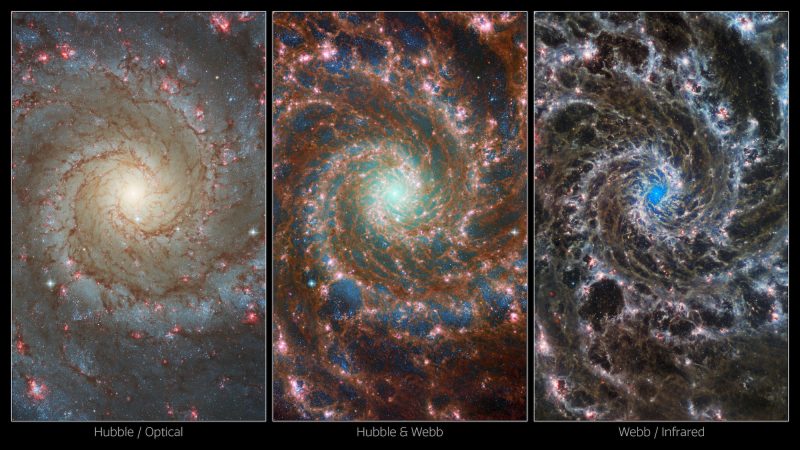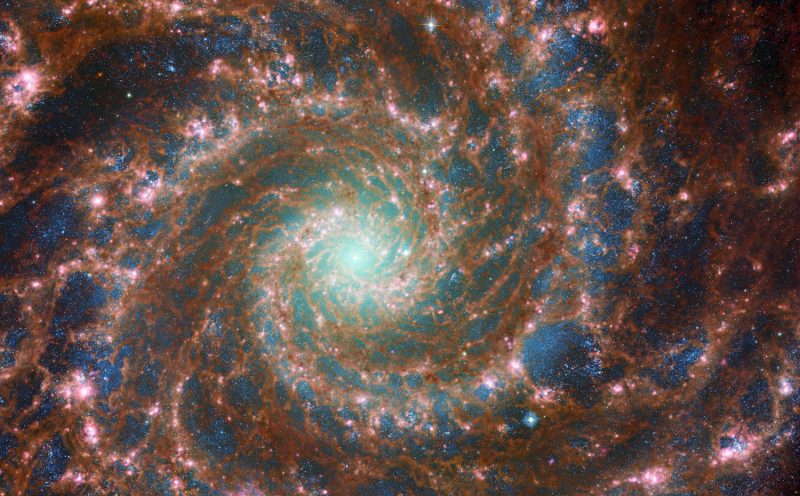
Combined views from Webb and Hubble
The European Space Agency (ESA) released these images of M74 – aka the Phantom Galaxy – yesterday (August 29, 2022). On the left, you see a Hubble Space Telescope image. On the right, you see a James Webb Space Telescope image. The center image is a composite, created by combining Hubble’s optical data with Webb’s mid-infrared data.
ESA described what you see in the new image:
The red colors mark dust threaded through the arms of the galaxy, lighter oranges being areas of hotter dust. The young stars throughout the arms and the galaxy’s core are in blue. Heavier, older stars toward the galaxy’s center are cyan and green, projecting a spooky glow from the core of the Phantom Galaxy. Bubbles of star formation are also visible in pink across the arms. It’s rare to see such a variety of galactic features in a single image.
M74, the Phantom Galaxy
The Phantom Galaxy – Messier 74 or M74 – is around 32 million light-years away from Earth in the direction toward our constellation Pisces the Fishes.
It’s called the Phantom because the galaxy’s surface brightness is low. It’s the most difficult to find of all the Messier objects that amateur astronomers observe in small telerscopes. The low surface brightness is due to the fact that the galaxy lies almost face-on to Earth. Yet this orientation in space lets us see the galaxy’s two clearly defined spiral arms, which make it an example of a grand design spiral galaxy.
Astronomers estimate M74 hosts about 100 billion stars.

Bottom line: A new image of M74 – the Phantom Galaxy – combines data from the Hubble Space Telescope and the James Webb Space Telescope.











